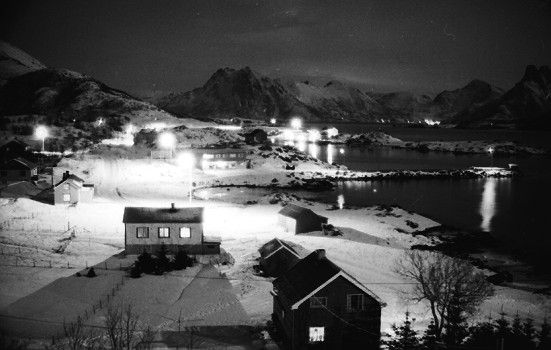 |
There are many myths about 'mørketida' - the murky time. First of all: No, it doesn't cover Norway from end to end, only the northern half, or more precisely - north of the arctic circle. Secondly: No, it doesn't get completely dark all day long, we have some hours with near daylight. And a third myth: No, we don't get crazy or more depressed during this dark part of the year. The murky time, as well as the weeks with midnight sun, is part of the normality here. I've picked six photos from the murky time, or rather, from some clear winter nights. The first one, facing east, shows Tunstad at Skogsøya. A string of road lamps fights the darkness, and there are lights behind some of the windows. In the background you can see a little hamlet under a mountain range on another island. |
|
Some windows are dark. The big building to the left, built a hundred years ago, was once the home of the 'lensmann' or sheriff. He also had his office there. In the 1950s the local administration moved from Skogsøya to Myre on Langøa. That process left many dark windows at Skogsøya. To the right there are lights in a newer bulding, typical for houses built in the 1960s. This photo is from 1983. Now, twenty years later, the windows are dark there, too. But the road in the lower left corner is still used. By the way, before taking this photo I turned westward and crossed over a little hill. |
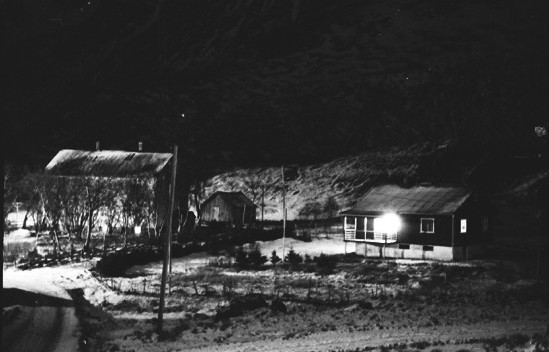 |
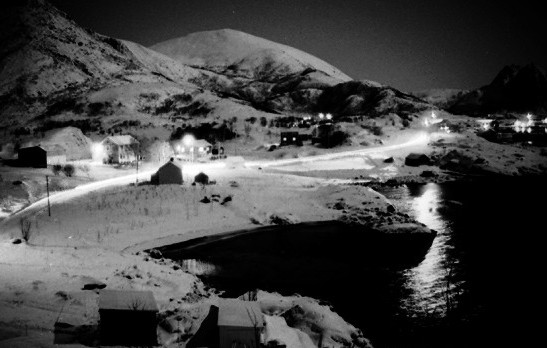 |
Here I have walked a bit to the west. Looking back I point the camera to the east again. The big building on the previous photo can be seen to the left. Some other buildings are dark. To the right in the foreground stand two sea houses. The country road is easy to spot, and you may have guessed why. A motorbike drove from left to right while I had the shutter open. In the background the snow-covered Øksnesheia shows its round profile. The snow shines bright in a moonless night, reflecting the light from aurora borealis (see the last photo). |
|
Now I have turned my camera due south. The dark mountain on the left half of the photo is Saltberget. The mountain sides there are too steep to get covered with snow. In the right half of the photo you may see faint lights from a distant hamlet. A light shines against the black side of Saltberget, reflecting itself in the calm sea. That's the lighthouse, leading the boats to the harbour. A color photo would have shown a red point of light. Along the shore some ice have formed, but not on the sea. This is almost as far north as Point Barrow, but the Gulf Stream keeps the sea well above the freezing point even in mid-winter. |
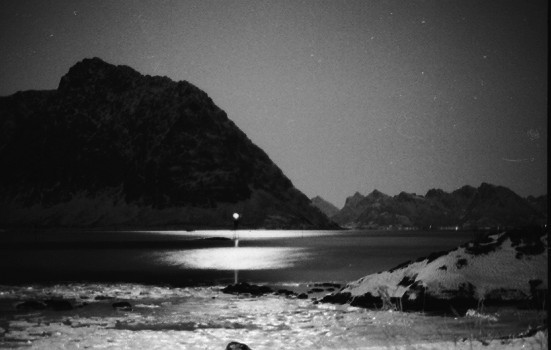 |
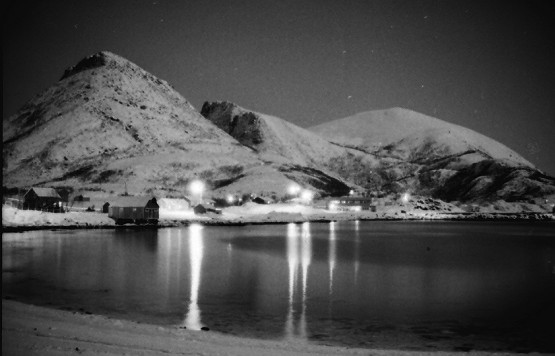 |
Here I have moved out on a point to get a new angle for taking a photo of Tunstad. Three mountains make up the background, from the left the stony Brannen, the steepsided Sommarsettinden and the broad Øksnesheia. Between the first two a valley runs across the island. To the left a dark house hovers on the beach. That's a 'brygge' - a quay with a sea-house (for storing goods) on it. When I took this photo the quay had gone in a storm. Last winter another storm flattened the sea-house, too. |
|
While I was taking these photos a 'nordlys' - northern lights or aurora borealis - was buiding up ahead, making the night less dark. In the west the mountain Tinden stands like a pyramid against the glowing sky. Behind it a wall of distant clouds, perhaps an upcoming storm, rises above the horizon. Between Tinden and the road lamp to the right you may see two faint points of light - two distant lighthouses. Even in the GPS age they are indispensible. |
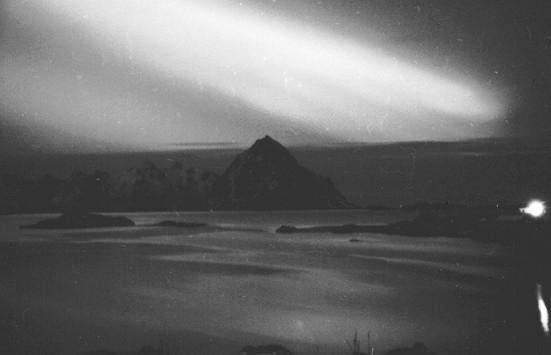 |
As you can see, the murky time isn't gloomy. When your eyes get accostumed to the darkness a very interesting scenery appears. Or what do you think?